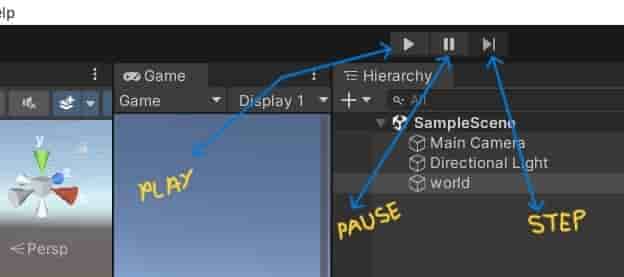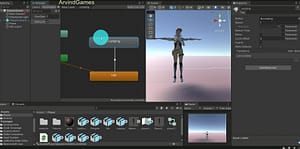There are links on this site that can be defined as affiliate links. This means that I may receive a small commission (at no cost to you) if you purchase something through the links provided on this website.
For details Click here.By [Arvind Kumar]

Unity is a powerful game development engine that offers various features to create immersive experiences. One of the essential functionalities in Unity is the ability to control the play, pause, and step modes. These 3 Play Modes in Unity allow developers to interact with their game or simulation during the development process and test various aspects of its functionality. In this article, we will explore what these modes are and how they can be valuable in the game development workflow.
1. Play Mode:
Play Mode in Unity is the primary mode used for testing and previewing your game. When you enter Play Mode, Unity simulates the actual gameplay experience by running the game in the editor. This mode is perfect for checking how your assets, scripts, and mechanics perform in a real-time environment. While in Play Mode, you can interact with your game, traverse levels, trigger events, and observe the game’s behaviors.
2. Pause Mode:
Pause Mode in Unity allows you to freeze the execution of your game code at a specific point, giving you the ability to analyze the game’s state precisely when an issue occurs. When you pause the game, you can inspect the values of variables, debug the code, or view different parts of the game to identify and troubleshoot any bugs or unexpected behaviors. This mode is especially effective for fine-tuning game mechanics or addressing issues that occur during gameplay.
3. Step Mode:
Step Mode is an advanced feature in Unity that lets you have full control over the game’s execution, one step at a time. It allows you to progress through the game and execute the code line by line, providing a detailed insight into how your scripts are behaving. Step Mode is particularly useful when investigating complex systems or when you want to ensure that your code logic is working as intended. By executing the code step by step, you can identify and fix any issues that may arise during gameplay.
Combining these modes provides a robust testing and development environment for Unity projects. During the development process, you can switch between play, pause, and step modes to analyze and test different scenarios, identify and iron out bugs, and add polish to your game or simulation.
Additionally, Unity offers various debugging tools that can be used in conjunction with these modes to further enhance the development process. Features such as breakpoints, watch windows, and console logs can help you track down errors and understand the intricacies of your game’s code.
In conclusion, understanding and utilizing these 3 Play Modes in Unity is essential for effective game development. These modes provide developers with the tools and flexibility to test, debug, and refine their games, ensuring a smooth and enjoyable experience for players. By harnessing the power of these modes and Unity’s debugging tools, developers can create polished, bug-free games that captivate their audience.

